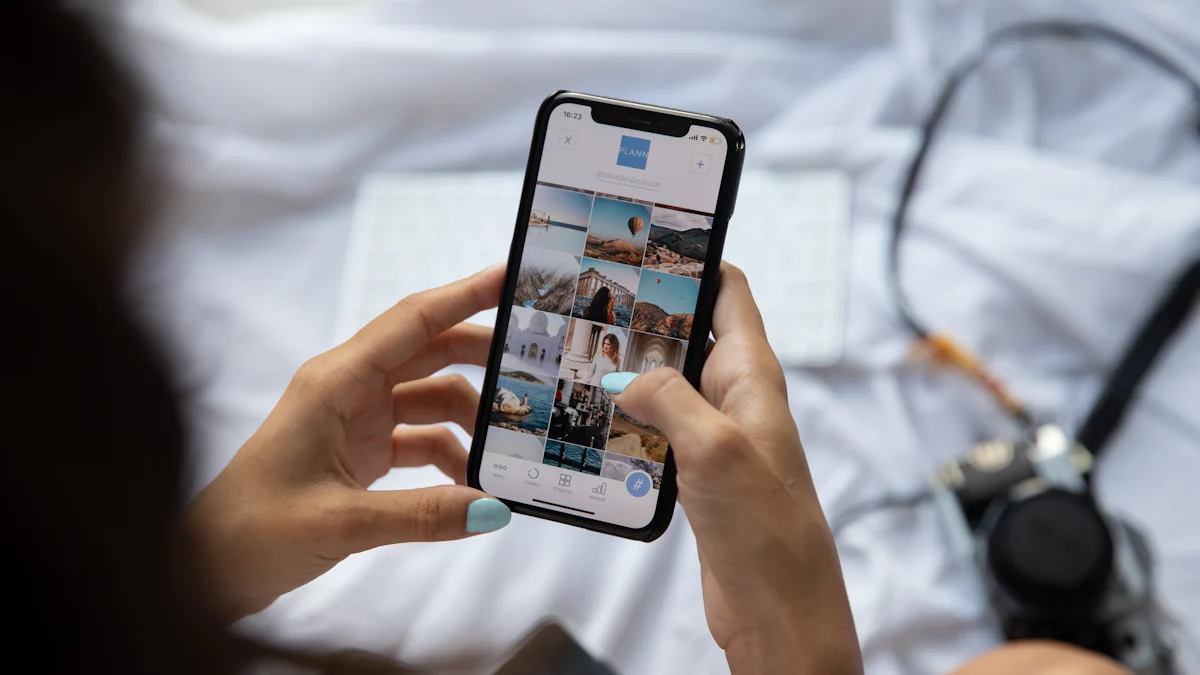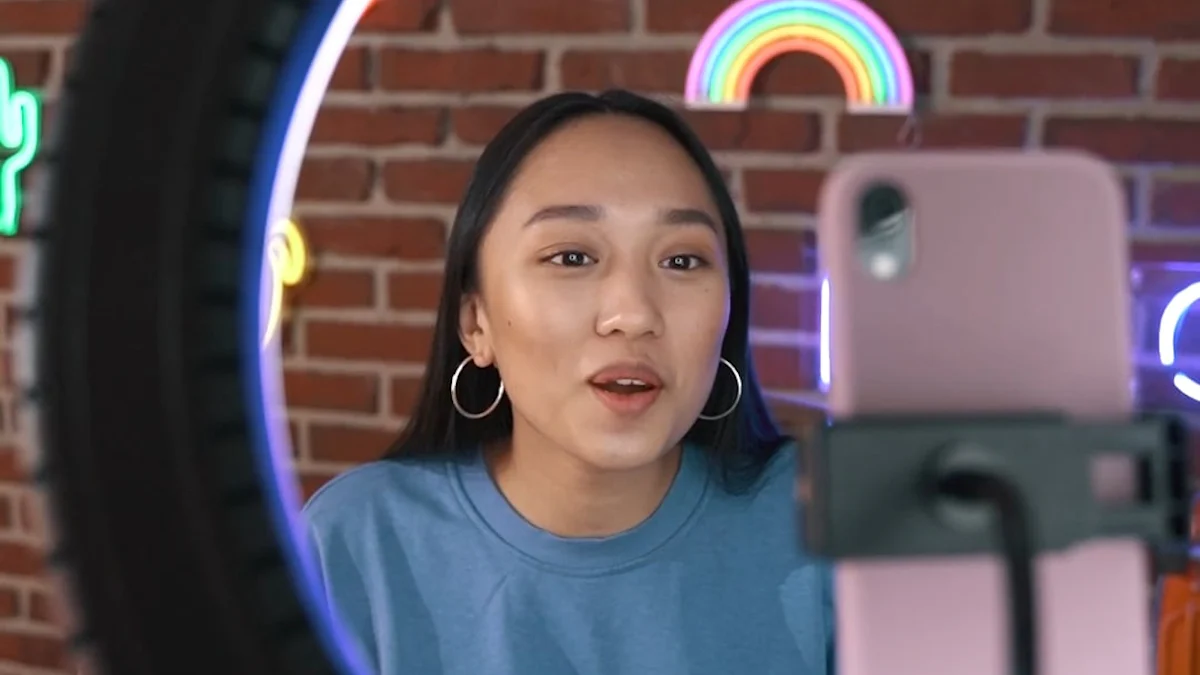Proven Strategies to Elevate Your Influencer Marketing Campaigns

Influencer marketing, particularly through social media and influencer marketing strategies, has become a game-changer for brands looking to connect with their audience. Did you know that businesses earn an average of $6.50 for every $1 spent on influencer campaigns? That’s not all. Over 51% of marketers say it helps them attract better customers, while 36% believe influencer-generated content outshines traditional branded posts.
With the global influencer marketing market valued at $21.1 billion in 2023, it’s clear that social media and influencer marketing isn’t just a trend. It’s a proven way to build trust, expand your reach, and boost conversions. Whether you’re a small business or a global brand, the right approach to social media and influencer marketing can transform your results.
Understanding Social Media and Influencer Marketing

What Is Influencer Marketing
Influencer marketing is all about collaborating with individuals who have a strong online presence and a loyal following. These influencers use their platforms to promote your brand, products, or services in a way that feels authentic to their audience. Unlike traditional advertising, influencer marketing focuses on building connections through trust and relatability.
Today, social media and influencer marketing have evolved into a powerful tool for brands. With platforms like Instagram, TikTok, and YouTube leading the charge, influencers have become the bridge between businesses and their target audiences. In fact, 66% of brands report that creator content delivers a higher ROI than traditional digital ads. This shift shows how much marketing strategies now rely on influencer engagement.
In 2024, influencer marketing opportunities are at their peak. Digital communities dominate commerce, and influencers are at the heart of these communities. They’re not just promoting products—they’re shaping trends and driving conversations.
Benefits of Influencer Marketing
Building Trust and Credibility
When an influencer endorses your brand, their followers see it as a recommendation from a trusted friend. This trust can be a game-changer for your business. Influencers have already built credibility with their audience, so their support for your product feels genuine. This authenticity is what makes social media and influencer marketing so effective in today’s world.
Expanding Brand Reach
Influencers help you reach audiences you might not connect with otherwise. Their followers often belong to specific niches, making it easier for you to target the right people. Whether you’re working with a micro-influencer or a big-name creator, their content can introduce your brand to thousands—or even millions—of potential customers.
Driving Conversions and ROI
The ultimate goal of any marketing campaign is to drive results, and influencer marketing excels here. By leveraging the trust and reach of influencers, you can boost sales, increase website traffic, or grow your social media following. With the right strategy, you’ll see a significant return on investment. After all, businesses earn an average of $6.50 for every $1 spent on influencer campaigns.
Building an Effective Influencer Marketing Strategy
Setting Clear Campaign Goals
Defining your campaign goals is the first step to a successful strategy. What do you want to achieve? Some common objectives include:
- Boosting sales and conversions
- Enhancing customer engagement
- Increasing brand awareness
- Driving website traffic
Once you’ve identified your goals, align them with your overall marketing strategy. Start by mapping out your business objectives. For example, if your company aims to increase brand awareness, focus on influencer collaborations that prioritize reach and visibility. Break down your goals into smaller, actionable steps. Use S.M.A.R.T. goals (Specific, Measurable, Achievable, Relevant, Time-bound) to track progress and ensure your influencer marketing strategy stays on course.
Identifying the Right Target Audience
Understanding your target audience is crucial. Who are you trying to reach? Dive into audience demographics like age, gender, location, and interests. Tools like Instagram Insights or Influencity can help you analyze these details.
Next, match your audience with influencer content. Look for influencers whose followers share similar values and preferences with your ideal customers. For instance, if your audience loves sustainable fashion, partner with influencers who promote eco-friendly brands. This alignment ensures your message resonates and drives engagement.
Finding and Choosing the Right Influencers
Not all influencers are created equal. To find the right fit, evaluate their relevance and niche alignment. Do they create content that matches your brand’s identity? Check their engagement rates—likes, comments, and shares matter more than follower count. Authenticity is key, so review their past collaborations to see if they genuinely connect with their audience.
Also, consider their reputation and shared values. Influencers who align with your brand’s mission will feel like natural ambassadors. This connection builds trust and strengthens your influencer marketing efforts.
Budgeting for Influencer Marketing
Allocate resources effectively
Budgeting for influencer marketing requires careful planning to ensure your resources are used wisely. Start by considering all potential expenses. These include influencer compensation, software for campaign management, and media buying. The type and number of influencers you work with will also impact your budget. For example, nano-influencers charge $10–$100 per post, while macro-influencers can cost $5,000–$10,000 per post. If you’re targeting platforms like YouTube, expect to pay $1,000–$10,000 per video.
To allocate your budget effectively, think about your campaign goals. Are you aiming for brand awareness or direct sales? For smaller campaigns, micro-influencers offer a cost-effective option with highly engaged audiences. On the other hand, macro- or mega-influencers are better for reaching a broader audience. Compensation models also matter. You can choose between product gifting, one-off fees, or performance-based pricing. Each option has its pros and cons, so pick what aligns with your strategy.
Balance between micro- and macro-influencers
Finding the right balance between micro- and macro-influencers can maximize your results. Micro-influencers often have smaller but highly engaged audiences. Their content feels personal, which builds trust with followers. Macro-influencers, however, bring a larger reach and can amplify your brand’s visibility. A mix of both allows you to tap into niche communities while still reaching a wider audience.
Crafting a Campaign Brief
Provide clear guidelines and expectations
A well-crafted campaign brief sets the foundation for success. Start by outlining your brand and campaign objectives. Include details about your target audience and the message you want to convey. Be specific about deliverables, timelines, and platforms. For instance, if you want Instagram posts, specify the format, hashtags, and posting schedule. Clear communication ensures influencers understand your expectations.
Encourage authentic and creative content
To get the best results, let influencers showcase your brand in their unique style. Instead of providing rigid scripts, offer guidance that inspires creativity. Encourage storytelling—ask influencers to share personal experiences with your product. This approach makes the content relatable and engaging. Avoid overly promotional content, as it can feel forced. Long-term partnerships also help. When influencers genuinely integrate your brand into their lives, their content feels more authentic.
Tip: Transparency is key. Allow influencers to share honest reviews and disclose partnerships. This builds credibility with their audience and strengthens your campaign.
Advanced Strategies for Successful Influencer Marketing
Leveraging Micro-Influencers
Benefits of smaller, engaged audiences
Micro-influencers are a hidden gem in influencer marketing. Their smaller follower base creates a tight-knit community where trust and interaction thrive. This connection leads to higher engagement rates compared to larger influencers. Their followers see them as relatable and authentic, which makes their recommendations more credible. If you're looking to build meaningful audience engagement, micro-influencers are your go-to option.
Cost-effectiveness and niche targeting
Working with micro-influencers is also budget-friendly. They charge less than macro-influencers, allowing you to collaborate with multiple creators without breaking the bank. Plus, they often specialize in niche topics, giving you access to specific market segments that align with your brand. Whether you're targeting eco-conscious shoppers or tech enthusiasts, micro-influencers can help you reach the right audience effectively.
Creating Shoppable Content
Use direct purchase links in posts
Shoppable content makes it easy for your audience to buy your products. By adding direct purchase links to influencer posts, you reduce the steps between discovery and purchase. Platforms like Instagram allow influencers to tag products, so followers can view details and shop without leaving the app. This seamless experience boosts conversions and makes your campaigns more effective.
Leverage platforms like Instagram Shopping
Instagram Shopping takes shoppable content to the next level. Features like live shopping events let influencers showcase your products in real-time, creating an interactive experience. These events not only drive sales but also increase audience engagement. By using tools like these, you can turn casual viewers into loyal customers.
Running Contests and Giveaways
Boost engagement and follower growth
Contests and giveaways are a fun way to attract attention to your brand. They encourage followers to interact with your content, whether it's liking, sharing, or tagging friends. For example, a mystery box giveaway can create excitement and intrigue, while a spin-the-wheel contest offers instant rewards like discounts or freebies. These strategies can quickly grow your follower base and keep your audience engaged.
Encourage user-generated content
Giveaways also inspire creativity among your audience. You can ask participants to share photos, videos, or captions featuring your product. This user-generated content not only promotes your brand but also builds a sense of community. Plus, it gives you authentic material to share on your own channels, enhancing your overall influencer marketing efforts.
Tip: Collaborate with influencers to co-host giveaways. This partnership can expand your reach and attract a wider audience, making your campaign even more successful.
Building Long-Term Influencer Partnerships
Foster ongoing relationships
Building long-term relationships with influencers can take your influencer marketing efforts to the next level. When you collaborate with influencers over time, you create a partnership that feels authentic and trustworthy to their audience. This consistency helps influencers represent your brand more faithfully, as they develop a deeper understanding of your values and products.
Long-term partnerships also allow influencers to craft better content. They invest more effort into storytelling and align their messaging with your brand’s identity. Over time, this connection leads to a stronger bond between your brand and their followers. Plus, you can negotiate better rates for extended collaborations, making it a cost-effective strategy.
Another benefit? You reduce the risk of influencers promoting competitor products. By fostering loyalty with your chosen influencers, you ensure your brand stays top of mind for their audience. This ongoing exposure keeps your brand relevant and builds a sense of familiarity.
Tip: Treat influencers as partners, not just collaborators. Open communication and mutual respect go a long way in creating a successful long-term relationship.
Enhance brand loyalty and consistent messaging
Long-term influencer partnerships are key to maintaining consistent messaging. When influencers repeatedly showcase your brand, their audience becomes familiar with your values and offerings. This consistency avoids confusion and reinforces your brand identity. Over time, it fosters deeper emotional connections with their followers, which builds trust and loyalty.
Authenticity plays a big role here. When influencers genuinely connect with your products, their endorsements feel more credible. This authenticity resonates with their audience, leading to higher engagement and stronger loyalty toward your brand.
Additionally, long-term collaborations allow for better storytelling. Influencers can share their journey with your brand, creating a narrative that feels relatable and inspiring. This approach not only strengthens your community but also ensures your brand remains a trusted choice for their followers.
Note: Consistent messaging doesn’t just benefit your audience—it also helps your brand stand out in a crowded market.
Tools and Metrics for Effective Influencer Marketing Strategies

Tools for Campaign Management
Platforms for influencer discovery
Finding the right influencers can feel overwhelming, but the right tools make it easier. Platforms like Aspire, Upfluence, and Modash help you discover influencers who align with your brand. They offer features like audience analytics, campaign tracking, and influencer relationship management (IRM). MightyScout and Tagshop go a step further by combining influencer discovery with advanced analytics and CRM tools.
If you're looking for fraud detection, HypeAuditor is a great choice. For AI-powered campaign management, CreatorIQ stands out. These tools save you time and ensure you connect with influencers who match your goals. By using them, you can focus on building meaningful partnerships instead of spending hours on manual searches.
Tools for performance tracking
Tracking your campaign’s performance is just as important as finding the right influencers. Tools like Google Analytics help you monitor key metrics like website traffic, conversions, and audience behavior. They also let you make real-time adjustments to improve results. For example, if you notice low engagement, you can tweak your strategy immediately.
Performance tracking tools also enhance personalization. By analyzing customer preferences, you can deliver tailored content that resonates with your audience. This approach not only boosts engagement but also improves your return on investment.
Key Metrics to Measure Success
Engagement rates and audience growth
Engagement rates show how well your content connects with the audience. Metrics like likes, comments, and shares reveal whether your influencer’s followers find the content valuable. Audience growth, on the other hand, measures how many new followers your brand gains during the campaign. Both metrics are essential for understanding your campaign’s impact.
Conversion rates and ROI
Conversion rates track specific actions, like purchases or sign-ups, resulting from your campaign. They’re a direct indicator of success. To calculate ROI, use this formula: (Return / Cost) x 100. For instance, if you spend $5,000 and earn $15,000, your ROI is 200%. Tracking these metrics ensures your influencer marketing efforts deliver measurable results.
Optimizing Campaigns with Data
Analyze performance insights
Data is your best friend when it comes to improving campaigns. By analyzing metrics like click-through rates and audience engagement, you can identify what’s working and what’s not. For example, if one influencer drives more traffic than another, you can allocate more resources to them.
Test and refine strategies
Don’t be afraid to experiment. Testing different approaches, like new influencers or content styles, helps you refine your strategy. Continuous evaluation ensures your campaigns stay effective. Remember, influencer marketing isn’t a one-size-fits-all solution. Tailoring your approach based on data leads to better results.
Tip: Data-driven campaigns allow you to target the right influencers and craft messages that truly resonate with your audience.
Influencer marketing works best when you set clear goals, choose the right influencers, and use advanced strategies like micro-influencers or shoppable content. Building strong relationships with influencers is key. Did you know 56% of brands prefer repeat collaborations? That’s because long-term partnerships create trust and consistency.
Don’t forget to track metrics like engagement and ROI. Data helps you refine your approach and improve results. With 92% of consumers trusting peer recommendations, authentic storytelling is your secret weapon. Start implementing these strategies today, and watch your campaigns deliver real impact!
FAQ
What’s the best way to find influencers for my brand?
Use influencer discovery platforms like Aspire or Upfluence. These tools help you filter influencers by niche, audience demographics, and engagement rates. You can also check social media hashtags or explore your followers to find creators who already love your brand.
Tip: Look for influencers whose values align with your brand for authentic partnerships.
How do I measure the success of an influencer campaign?
Track metrics like engagement rates, audience growth, and conversions. Use tools like Google Analytics to monitor website traffic and sales. Calculate ROI by comparing campaign costs to revenue generated. These insights help you refine future strategies.
Note: Focus on both quantitative data and qualitative feedback from your audience.
Should I work with micro-influencers or macro-influencers?
It depends on your goals. Micro-influencers offer niche targeting and higher engagement. Macro-influencers provide broader reach and visibility. A mix of both can balance cost-effectiveness with audience expansion.
Tip: Start small with micro-influencers if you’re on a tight budget, then scale up.
How much should I budget for influencer marketing?
Budgets vary based on influencer type and platform. Nano-influencers charge $10–$100 per post, while macro-influencers may cost $5,000–$10,000. Allocate funds based on your goals, whether it’s awareness or conversions.
Tip: Include costs for tools, content creation, and performance tracking in your budget.
Can I reuse influencer-generated content for my brand?
Yes! Repurpose influencer content for ads, social media, or your website. Always get permission first and credit the creator. This strategy saves time and adds authenticity to your marketing efforts.
Note: High-quality influencer content can boost your brand’s credibility and engagement.
See Also
Seven Essential Steps for Crafting Influencer Marketing Success
Key Influencer Marketing Statistics for Enhanced Strategy Development
Expert TikTok Influencer Marketing Techniques for 2024 Success
